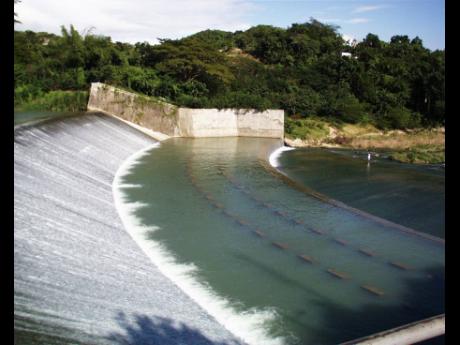The Rio Cobre River: a blessing in disguise
The Rio Cobre River can be considered a blessing in disguise to the hundreds of residents in St Catherine that depend on irrigation water, particularly for agricultural purposes. The Rio Cobre irrigation system, which started in 1870, was the first major endeavour to develop irrigated agriculture and is regarded as the most important of all public works initiated by then Governor Sir John Peter Grant.
The original construction of the Rio Cobre Dam, a diversion dam across the Rio Cobre River near Spanish Town in St Catherine, was completed between 1874 and 1876. However, the flood rains of May 21, 1991 resulted in the collapse of the Rio Cobre Dam and much disruption to irrigation and domestic water supplies to the St Catherine Plains.
Approximately 6,705 hectares (15,000 acres) of agricultural land and fresh water fish farms in Caymanas, Bernard Lodge, Innswood, Bushy Park, Hartlands, Hill Run and the Lawrence field areas of St Catherine were affected.
In addition, supplies to the National Water Commission Limited (NWC), which was procuring up to 2.5 million gallons of raw water daily from the Rio Cobre to the Spanish Town Treatment Plant to meet the domestic water requirements of Spanish Town and its environs, as well as supply to industrial plants in the area, were severely affected.
The Rio Cobre Dam was reconstructed by May 1995 at a cost of $257.5 million. To complement the reconstructed dam, improvements were made to the conveyance system, mainly involving the lining of earthen canals to prevent leakage. The Rio Cobre Dam reconstruction was recognised by the Institute of Civil Engineers as the engineering project of that year.
Today, it is the source of water for agricultural, industrial and domestic purposes, serving the St Catherine Plains and communities in and around Spanish Town. The Rio Cobre Dam continues to divert water from the river into an open canal for agricultural uses on the Plains of St Catherine for up to 13,500 hectares (8,650 acres) to the south, as well as provide municipal water to Spanish Town.
The river’s most significant feature is perhaps the gorge through which it runs between Bog Walk and northern Spanish Town.
There are a number of bridges over the Rio Cobre. The oldest and most famous is the Flat Bridge, which was first built before 1774. A second bridge, Iron Bridge was built in 1801. The proposal for this bridge first appeared in 1766 and the topic was discussed by various bodies until in 1796 when the House of Assembly originally resolved to erect a stone bridge.
However, technical difficulties led to an iron bridge being erected. This enabled the road to be raised above the surrounding terrain, something particularly important in the context of periodic floods during the rainy season.
It used the same technology developed for The Iron Bridge in Shropshire, England, and indeed constituted the first application of this technology outside the United Kingdom. The iron components were prefabricated in West Yorkshire with a total weight of 87 tons. It took 43 horse-drawn wagons to transport these from the coast to the construction site. The bridge remained in use until 2000, when erosion by storm water put its future survival in jeopardy. However, funds were raised for a restoration project which restored the bridge for use by 2010.

